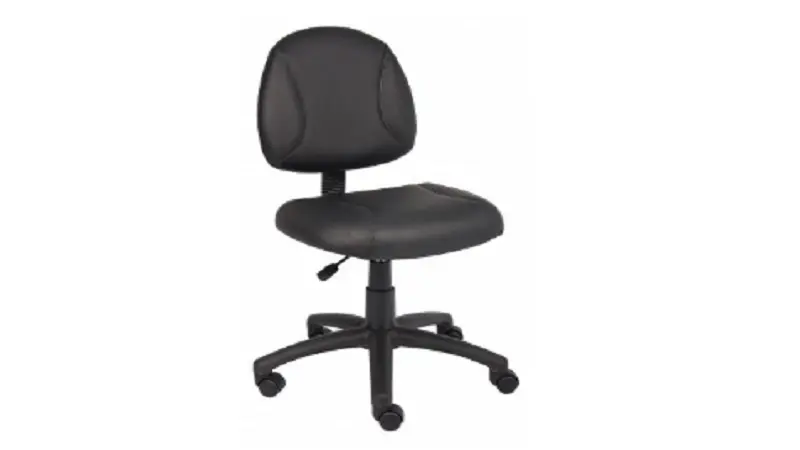Balancing employee health with compact room layouts in modern offices calls for agile furnishings uniting ingenuity with understanding. The versatile armless office chair answers this challenge – promoting customizable ergonomic support across constricted yet now accessible spaces.
Beyond square footage savvy mobility freeing collaboration, an armless office chair champions comfort intricately using contours hugging the body’s natural curves and breathable builds amplifying airflow. Leaders seeking every possible workplace health and efficiency gain find solutions here.
1. Prioritize Ergonomics for Comfort and Health
Ergonomics is paramount in an office chair. Look for features like adjustable seat height, adequate lumbar support, and a design that promotes good posture. An ergonomically sound chair can prevent discomfort and health issues associated with prolonged sitting.
2. Space Efficiency and Fit
Armless chairs are ideal for smaller spaces due to their compact design. Measure your workspace to ensure the chair fits without hindering movement. Also, consider the chair’s height relative to your desk to maintain an ergonomic working position.
3. Material Choices for Durability and Comfort
The chair’s material affects both its comfort and longevity. Leather chairs are durable and offer a classic look, while mesh chairs provide excellent breathability, which is beneficial in warmer climates. Fabric chairs offer versatility in texture and color. Assess the usage frequency and choose a material that balances comfort with durability.
4. Mobility Features for Flexibility
A good office chair should allow for effortless movement. Chairs with smooth-rolling casters and a stable five-point base are ideal for easy maneuverability. Ensure the casters are compatible with your floor type to prevent damage and enhance mobility.
5. Style and Aesthetics to Match Your Workspace
The chair’s style should complement your office decor. An armless office chair comes in various designs, from modern to traditional, and various colors. Select a chair that meets your functional needs, reflects your style, and enhances your workspace.
6. Budget and Quality Balance
While having a budget is important, balancing it with the chair’s quality is even more crucial. Investing in a higher-quality chair can be more cost-effective in the long run, as it may offer better ergonomics, durability, and comfort.
7. Testing the Chair for Personal Comfort
Try out the chair before purchasing. This lets you assess its comfort level, support, and adjustability. Sitting in the chair can provide valuable insights that you might not get from online descriptions or reviews.
8. Weight Capacity and Adjustability
Consider the chair’s weight capacity and adjustability options. Chairs with a higher weight capacity tend to be more robust. Adjustable features like seat tilt and tension control can enhance comfort and support.
Conclusion
In the puzzle of maximizing limited office space while upholding staff well-being and output, armless office chairs proactively pave the new ground with the missing piece – tracking worker movement patterns to foster rather than hinder productivity in confinement. Durable responsive furnishings specifically engineered for flexibility conceptually extend room dimensions while remaining modest in actual footprint.
Most importantly, armless ergonomic seats epitomize compassionate leadership’s commitment to nurturing potential without boundaries by refusing to compromise health for acres on any budget or building constraint. The boldest innovations in workplace optimization often begin with something small – like a supportive chair.
